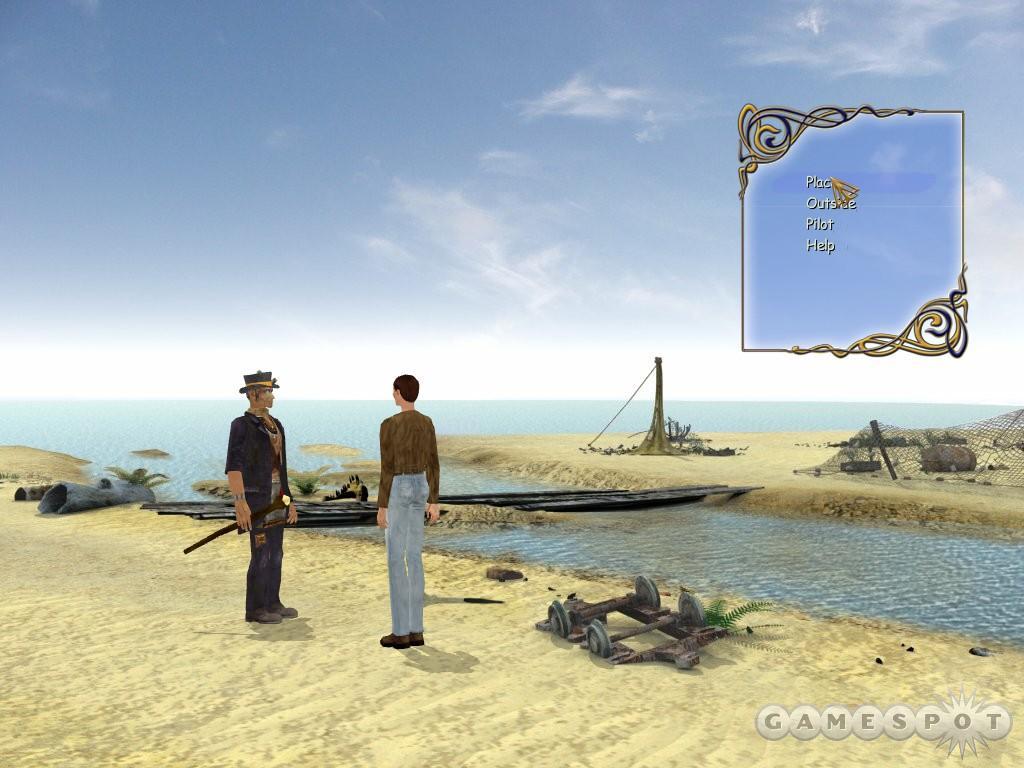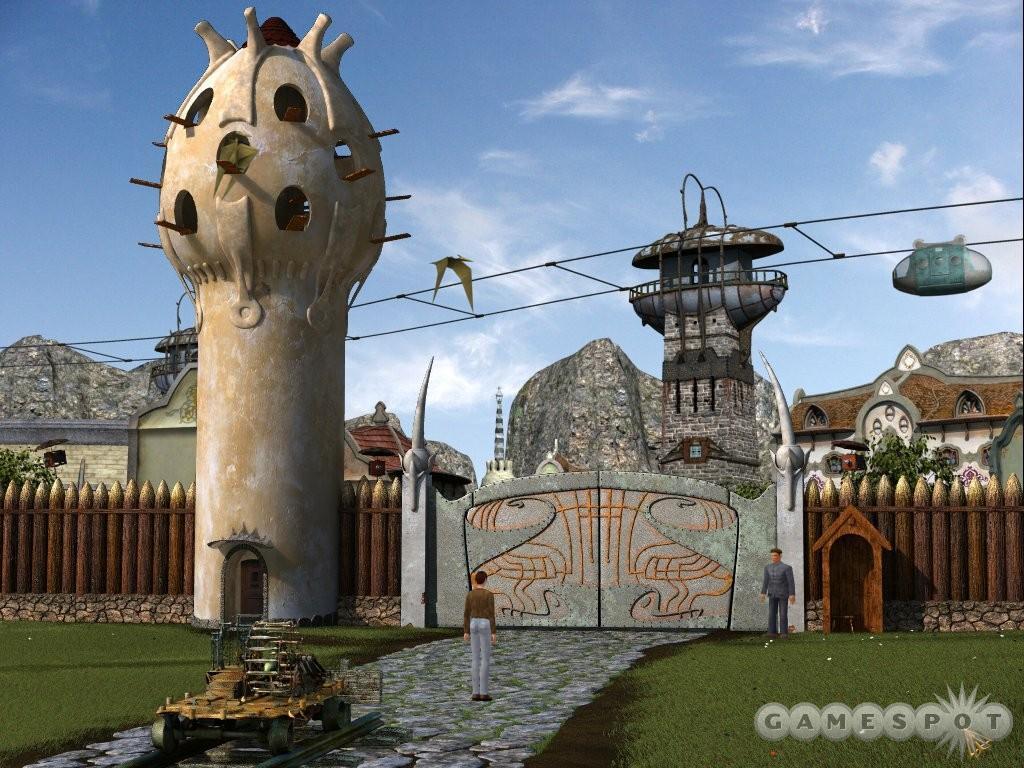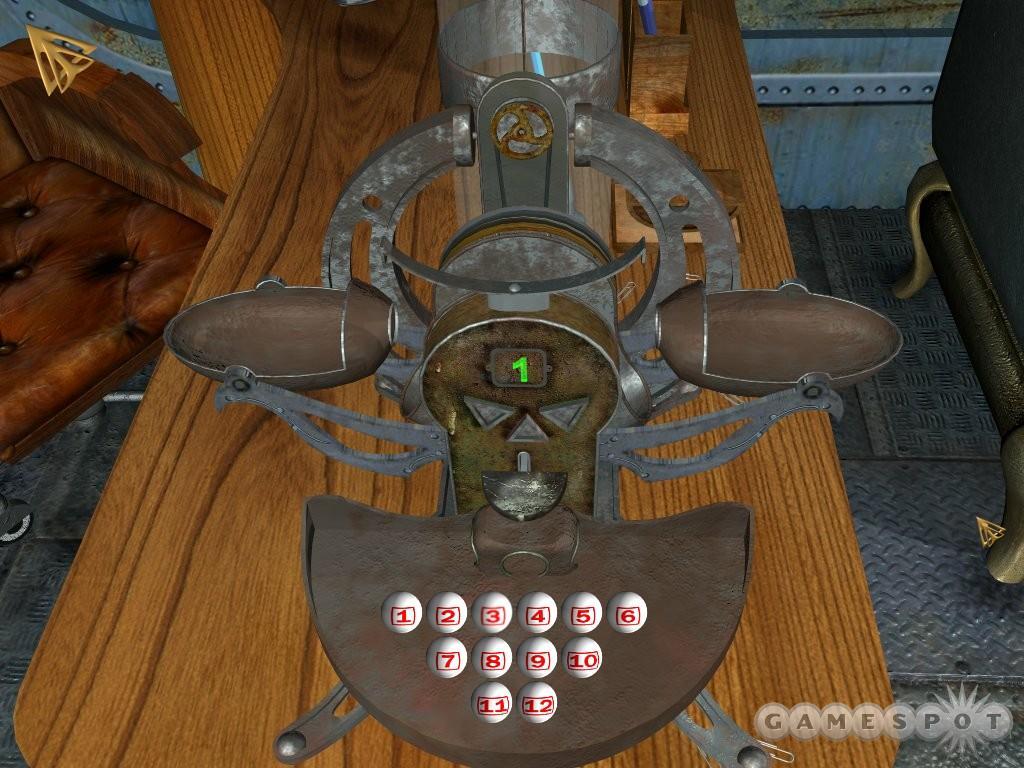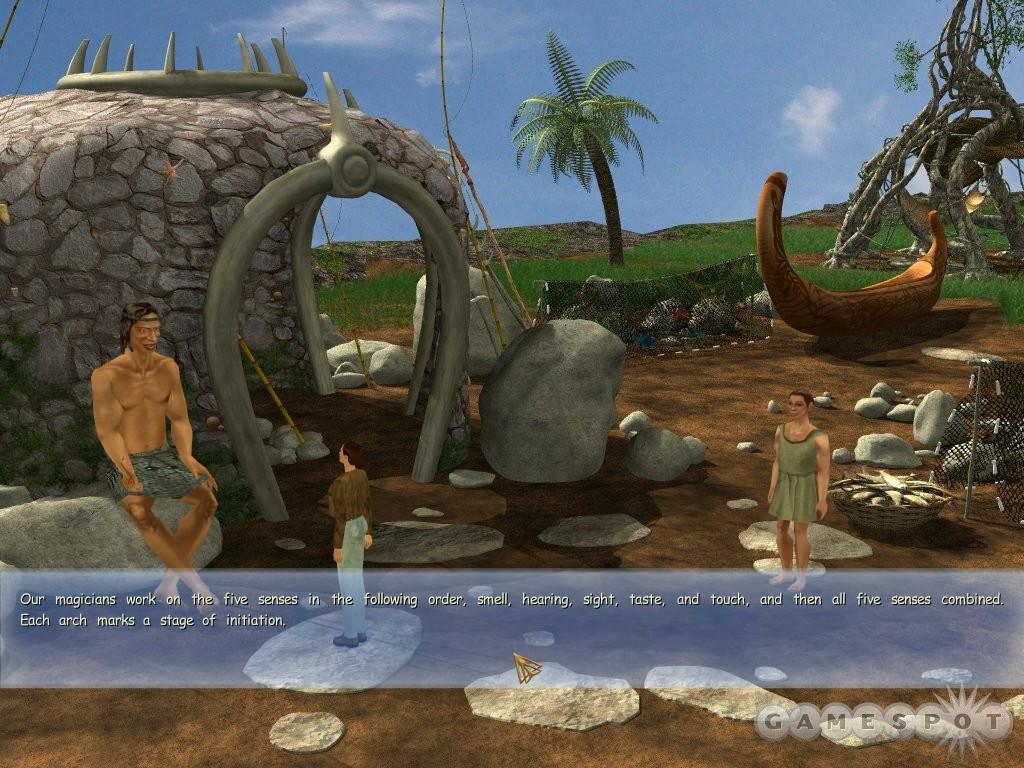Journey to the Center of the Earth has its heart in the right place. It's an unpretentious point-and-click adventure game where you explore an exotic world, collecting countless inventory items and solving puzzles with them. From that perspective, fans of old-school adventures should warm up to the game immediately. Then again, the game is marred by bugs, design problems, low production values, and general sloppiness that usually overshadow its genuine charms.

Journey to the Center of the Earth is inspired by Jules Verne's classic novel of the same name, but if you haven't read it, don't worry: The game's story stands on its own (even if it's very wobbly on its narrative feet). Taking part in a popular adventure game trend, Journey puts you in the shoes of a young female character, in this case a photojournalist named Ariane. Ariane is poorly fleshed out, though, and certainly won't make you forget better-written adventure game heroines like Nico Collard, April Ryan, or Kate Walker.
Ariane finds herself in dire straits from the get-go. A helicopter sets her down by the edge of a volcano in Iceland so she can take pictures. Soon after, a rockslide destroys the chopper, and when Ariane ventures into a nearby cave, she tumbles down into darkness.
She finds herself standing on a sunny beach, of all places. Talking to a nearby stranger reveals that Ariane is now in a secret underground world. It's your job to help her back to the surface while exploring the mysteries of this secret world. Along the way, you'll find a forest of giant mushrooms, tamed dinosaurs, a village of friendly giants, and a quasi-Victorian city of the future that melds 1800s technology with contemporary ideas like surveillance cameras and speedy cable cars. Thanks to a laptop computer, Ariane gets occasional e-mails updating her on the progress of her rescue party and other news from topside. In the strange underground world, she becomes enmeshed in a plot of manipulation and deceit with two possible endings: At a vital juncture, choosing one path will cause the game to end rather abruptly, but the other choice opens up another hour or two of gameplay.
Despite all the potential of the story and setting, they have about as much sophistication as the '70s kids' TV show Land of the Lost. In fact, it can be hard to tell if the game was intentionally geared toward kids or is just very poorly written. Ariane mostly seems to take her fall into another world inside the Earth in casual stride, and the inhabitants of this lost world usually don't blink an eye at the intruder in their realm. Most of the characters are paper thin, so don't expect the sort of memorable, even touching, characters you find in smarter adventures like Syberia or Broken Sword: The Sleeping Dragon. The setting is a mishmash of ideas, and the dialogue is juvenile and stilted--imagine a bad children's cartoon--to the point of eliciting laughter during the serious bits.

Still, if you can shut off your critical faculties and just go along for the ride, Journey's world can be fun to explore. The game taps into the perpetually enticing idea of some fantastic realm of adventure lurking just behind the humdrum facade of everyday life. In Journey, you'll fly in a hot-air balloon, travel in a submarine, and see shamans levitate, pterodactyls soar overhead, and giants herd mastodons.
Of course, Journey isn't just about exploring; it's also about puzzles--lots of them. Here's where Journey's faults are harder to forgive; to some extent you can tune out the story, but not the puzzles. Most of the puzzles are based on finding or combining the right inventory items. Most of your searching will take the form of "FedEx" quests on behalf of the characters you meet, people who are apparently too lazy or inept to walk down the street and grab the items themselves. Unfortunately, it's all too easy to overlook items during your searches because they're tiny, or they're dark and placed against a dark background, or because the cursor doesn't let you know you're over a hotspot unless you position it perfectly over a tiny area. Sometimes you can't pick up an item when you first notice it; later, after tripping a hidden trigger in the game's logic, you can mysteriously pick it up. That can involve laborious backtracking across many screens to get to it. You'll often receive inventory items from characters, but usually your only notification is a tiny, easily missed sound effect.
Good games let you know what you're supposed to do (or at least what it's possible to do) and why. They also give you some emotional motivation to pursue a goal. That's not often the case with Journey, where puzzles can fail to give you enough feedback or hints about what you're supposed to do or why. Often the only motivation they give you to solve them is simply that you have to in order to proceed. Since the characters are so forgettable, it's hard to identify with their problems that require you to look over hill and dale for some little item so they can fix a machine. The puzzles can also be convoluted, counterintuitive, or abstruse. In one scene, for example, a ferocious dinosaur blocks your path. What are you going to do? Naturally, you'll deduce that you need to "pull a MacGyver" and create your own fireworks out of a bunch of inventory items to startle the dinosaur away. And that's actually one of the more obvious puzzles.

Despite such big problems, it can still be amusing to amass a heaping pile of inventory items and figure out what you can do with all your goodies. Outside of the inventory puzzles, the other challenges are nicely varied, too, so you don't get the feeling you're solving the same puzzle in different guises over and over. In fact, some of the non-inventory puzzles can be good fun. They'll challenge your skills of logic, pattern recognition, and the like without, for the most part, being too tough. If you're just in it for the puzzles, Journey isn't all bad.
Making your way around the gameworld to solve the puzzles can be a real chore, though. As you move your cursor across the screen, it shows a pair of footprints when you can move Ariane offscreen to a new area. Unfortunately, you often have to position the cursor over a minute area for it to activate. In many instances, the cursor never changes at all, despite nearby areas you can explore, so you'll need to move Ariane all over the current screen to see where else she can go. The connections between areas are set up so poorly that it can be hard to navigate inside even a tiny tent or a small building: You click one direction and end up going to an area you didn't intend or expect. Moving between areas often causes the two adjacent screens to flash back and forth rapidly during the transition, too.
Bugs cause more movement hassles: Sometimes Ariane will just keep circling in place for no reason. Once, we tried moving to a new area and ended up right back where we started. Movement isn't the only interface problem: To examine an item, you usually have to click on it, then click "read" or "analyze" above the item in your inventory bar, then open Ariane's laptop computer, then select the item from a list, and then view it on her computer screen. If that's not arbitrary and redundant and clumsy, what is? The game is also marred by sloppiness, like when you can ask a character about an object before you've even seen it, get greeted twice by a character as if for the first time, or walk through a closed force field before you've properly opened it.

Problems sadly don't end there. Small bugs mar the graphics and audio. The voice-overs range from barely acceptable to laugh-out-loud bad, sounding like they were done by random people off the street instead of professional actors. Some of the actors who play the giants distort their voices to make them sound deeper, so these actors end up sounding like bad Fat Albert impersonators. The sound effects are sparse and cheap sounding, and some are too obviously stock. All isn't lost, though, since Journey boasts a buoyant, romantic score for piano and strings that really suits the spirit of adventure. The gameworld itself is pretty: The 2D backdrops are finely detailed and vibrantly colored, however nonsensical some scenes might be. It's just a shame that the foreground animations are slow and stiff and the characters bland or ugly.
Journey to the Center of the Earth is one of those "if only" games: If only the writing were smarter, if only the acting were convincing, if only the design problems and bugs had been fixed, and so on. Still, it's nice to see well-varied puzzles, even if they can be too convoluted or confusing at times. The basic premise of the game is certainly enticing, too; it's just a shame the developers didn't do more with it. There are some nice moments in Journey to the Center of the Earth, but you'll have to sit through a lot of bad moments to get to them.